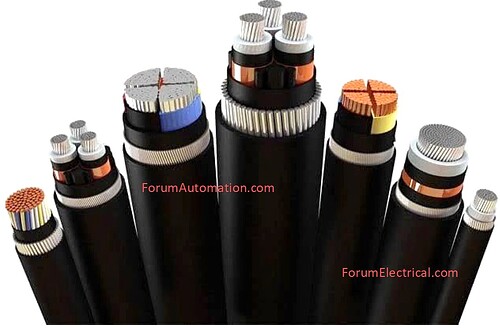In modern power distribution and transmission,
XLPE (Cross-Linked Polyethylene) insulated cables are the industry standard for underground systems.
Here’s a quick guide to commonly used XLPE cables and their typical applications:
1). 1.5 mm² - 6 mm² (LV)
2). 10 mm² - 50 mm² (LV/MV)
3). 70 mm² - 120 mm² (MV)
4). 150 mm² - 300 mm² (MV)
5). 400 mm² - 630 mm² (HV)
6). 800 mm² - 1600 mm² (HV/EHV)
7). 2000 mm² - 2500 mm² (EHV)
1). 1.5 mm² - 6 mm² (LV)
Ideal for domestic wiring, lighting circuits & small commercial installations. Flexible and easy to install.
2). 10 mm² - 50 mm² (LV/MV)
Used in small-scale underground networks such as residential developments and street lighting.
3). 70 mm² - 120 mm² (MV)
Common in 11 kV distribution systems.
Balances current capacity and installation cost.
4). 150 mm² - 300 mm² (MV)
Suited for industrial feeders and medium-load substations in the 11–33 kV range.
5). 400 mm² - 630 mm² (HV)
Used for 33–132 kV underground transmission. Handles higher loads with excellent thermal stability.
6). 800 mm² - 1600 mm² (HV/EHV)
Found in major utility infrastructure and grid interconnections. High capacity with superior performance.
7). 2000 mm² - 2500 mm² (EHV)
Applied in 220–400 kV transmission corridors. Supports long-distance, high-load transfer with minimal loss.
Why XLPE?
High thermal resistance
Low dielectric loss
Moisture-resistant and chemically stable
Long service life with minimal maintenance
Selecting the right XLPE cable ensures safety, reliability, and efficiency in underground power systems.
You can also follow us on AutomationForum.co, Facebook and Linkedin to receive daily Instrumentation updates.
You can also follow us on ForumElectrical.com , Facebook and Linkedin to receive daily Electrical updates.
